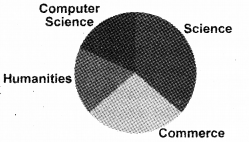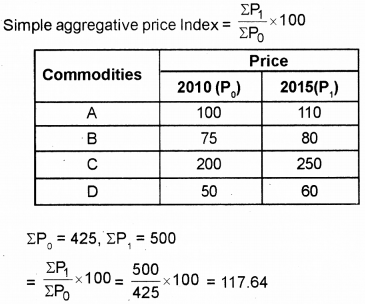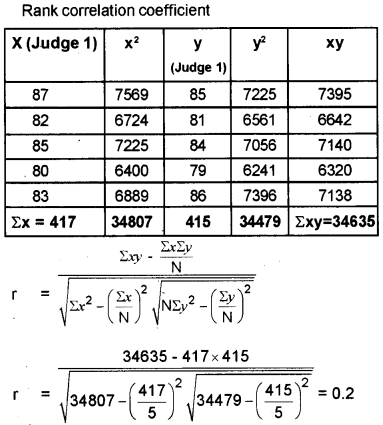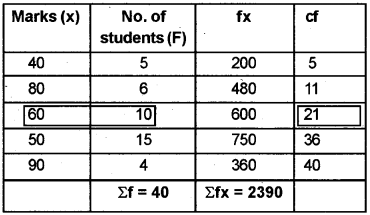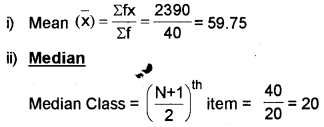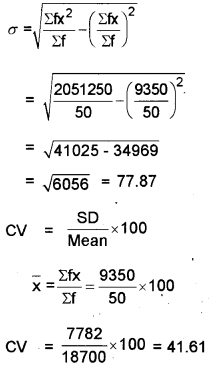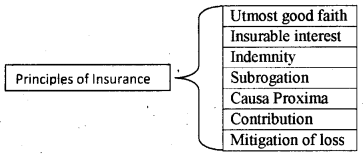Kerala Plus One Business Studies Previous Year Question Paper March 2018 with Answers
| Board | SCERT |
| Class | Plus One |
| Subject | Business Studies |
| Category | Plus One Previous Year Question Papers |
Time Allowed: 21/2 hours
Cool off time: 15 Minutes
Maximum Marks: 80
General Instructions to Candidates
- There is a ‘cool off time of 15 minutes in addition to the writing time.
- You are not allowed to write your answers nor to discuss anything with others during the ‘cool off time’.
- Use the ‘cool off time’ to get familiar with the questions and to plan your answers.
- Read questions carefully before you answering.
- All questions are compulsory and the only internal choice is allowed.
- When you select a question, all the sub-questions must be answered from the same question itself.
- Calculations, figures, and graphs should be shown in the answer sheet itself.
- Malayalam version of the questions is also provided.
- Give equations wherever necessary.
- Electronic devices except non-programmable calculators are not allowed in the Examination Hall.
Answer all questions from question numbers 1 to 9. Each carries one score. (9 × 1 = 9)
Question 1.
The broad classification of business activities include ………. and ……….
a) Trade and Auxiliaries to trade
b) Industry and Commerce
c) Industry and Trade
d) Internal Trade and External Trade
Answer:
Industry and commerce
Question 2.
Which among the following is the main characteristic of Hindu Undivided Family Business?
a) Single ownership
b) Transfer of membership
c) Membership by birth
d) Registration is compulsory
Answer:
Membership by birth
Question 3.
VSAT (Very Small Aperture Terminal) is satellite based ………..
a) Rail transport service
b) Communication service
c) Banking service
d) Airtransport service
Answer:
Communication service
Question 4.
An apex bank set up in India to provide financial assistance to small business organizations is
a) SIDBI
b) RSBDC
c) IDBI
d) IBRD
Answer:
a) SIDBI
Question 5.
Identify the document issued by public companies to invite public to subscribe its shares.
a) Prospectus
b) Memorandum of Association
c) Table A
d) Articles of Association
Answer:
a) Prospectus
Question 6.
Fill in the series as per hint given :
a) Equity Shares – Owned Capital
b) Debentures – ……….?………..
Answer:
Borrowed capital
Question 7.
Which among the following is against business ethics?
a) Using fair weights and measures
b) Fair treatment to workers
c) Earning reasonable profits
d) Charging unfair price
Answer:
d) Charging unfair price
Question 8.
Find the odd one from the following :
a) Supermarkets
b) Multiple shops
c) Market traders
d) Mail order houses
Answer:
c) Market traders
Question 9.
Which one of the following is NOT an export document?
a) Letter of credit
b) Bill of Lading
c) Bill of entry
d) Certificate of origin
Answer:
a) Letter of credit
Answer any five from question numbers 10 to 15. Each carries two scores. (5 × 2 = 10)
Question 10.
Write any two social responsibilities of business towards consumers.
Answer:
- Supply right quality and quantity of goods and services at reasonable prices.
- Avoiding unfair trade practices like adulteration, poor quality, misleading advertisement etc.
Question 11.
Suggest any two payment mechanism used in e-Business.
Answer:
- Cash on delivery
- Cheques
- Debit/Credit cards
- Digital currency
Question 12.
‘A public sector undertaking formed by passing an Act in the Parliament’. Identify it. Give an example.
Answer:
- Statutory corporations or public corporations
- Examples: LIC, RBI, SBI
Question 13.
Write any two merits of retained earnings as a source of finance.
Answer:
- It is a permanent source of funds available to an organization
- No costs in the form of interest, dividend or flotation cost.
Question 14.
Differentiate the terms Licensing and Franchising in connection with international business.
Answer:
Difference between Licensing and Franchising:
Licensing:
- The term Licensing is used in connection with production and marketing of goods
- Licenser does not have control over licensee
- Rules and regulations are flexible
Franchising:
- The term franchising is used in connection with production and marketing of services
- Franchiser excercise control over franchise
- Rules and regulations are rigid
Question 15.
List any two services rendered by retailers to consumers.
Answer:
- A retailer collects different varieties of goods. So he can satisfy different types of customers.
- A retailer provides market information to wholesalers and manufacturers.
Answer any six from question numbers 16 to 22. Each carries three scores. (6 × 3 = 18)
Question 16.
Write any three differences between Profession and Employment.
Answer:
| Basis | Profession | Employment |
| a) Commencement | a) Membership of a professional body | a) Appointment letter |
| b) Return | b) Fees | b) Salary/Wages |
| c) Qualification and training | c) Prescribed by professional body | c) Prescribed by the employer |
Question 17.
There are persons who assemble resources and undertake the necessary steps to form a company. Name such persons. Explain their legal position in the company.
Answer:
a) Promoter
b) The promoter is neither an agent nor a trustee of the company. The promoter stands in the fiduciary relationship with the company. He should not make any secret profits out of the dealings. Any such gains are to be disclosed. The promoter must act honestly, in good faith and in the best interest of the company. The promoter is personally liable for all the preliminary contracts with the other parties before incorporation. The promoter is also liable for any omission of facts or false statements in the prospectus.
Question 18.
Write any three differences between departmental undertakings and statutory corporations.
Answer:
| Basis | Departmental Undertaking | Statutory Corporations |
| a) Formation | a) By order of the ministry | a) By a special Act of the parliament and the state legislature |
| b) Management | b) By Govt. officials | b) Board of directors |
| c) Legal status sand ownership | c) No separate legal entity. Wholly owned by the government | c) Separate legal entity. Wholly owned by the government. |
Question 19.
List out any three features of cottage industries.
Answer:
Features of Cottage Industries:
Cottage industries: Cottage industries are characterised by certain features –
- These are organised by individuals, with private resources
- Normally use family labour and locally available talent
- The equipment use,d is simple
- Capital investment is small
Question 20.
A large retailing unit, selling a wide variety of consumer goods on low price and with self-service concept. Identify it and mention any two advantages.
Answer:
a) Supermarkets/Super Bazars
b) 1. Consumers can purchase everything from supermarket
2. There is no bad debt as sales are on cash basis only.
3. They are located at the centre of a town.
Question 21.
From the items given in brackets, choose the suitable mode of entry into international business for the following cases. (Joint venture, Contract manufacturing, Licensing)
a) Agreement with a manufacturer of foreign country to get the products produced.
b) A contractual arrangement to access the patent ortechnology of a firm for producing goods in foreign country.
c) Establishing a firm jointly with a foreign partner.
Answer:
a) Contract manufacturing
b) Licensing
c) Joint venture
Question 22.
Briefly explain the objectives of International Monetary Fund.
Answer:
Objectives of International monetory fund (IMF)
- To provide international monetary cooperation through a permanent institution.
- To facilitate expansion of balanced growth of international trade and to promote and maintain high levels of employment.
Answer the following question which carries four scores. (4 × 1 = 4)
Question 23.
Match the following
| A | B |
| a) Formed by an agreement | i) Joint-stock companies |
| b) Not sharing profits | ii) Corporative societies |
| c) one Man one Vote | iii) Partnership business |
| d) Transferability of shares | v) Sole proprietorship |
Answer:
| A | B |
| a) Formed by an agreement | iii) Partnership business |
| b) Not sharing profits | iv) Sole proprietorship |
| c) One Man one Vote | ii) Corporative societies |
| d) Transferability of shares | i) Joint-stock companies |
Answer any two from question numbers 24 to 26. Each carries four scores. (2 × 4 = 8)
Question 24.
A Business Organization join hands with anotherone for mutuaf benefits.
a) Name the type of a business referred here.
b) Describe any three benefits of it.
Answer:
a) Joint ventures
b) Benefits of joint ventures
- Since the local partner also contributes to the equity capital, the international firm has less fi¬nancial burden to expand the business globally.
- It helps to execute large projects requiring huge capital outlays and manpower.
- The foreign business firm benefits from local partner’s knowledge of the host countries.
- The foreign business firm shares cost and risks with local partner. So they can enter into foreign market very easily and without high risk.
Question 25.
Distinguish between goods and services.
Answer:
| Service | Goods |
| 1. An activity or process, e.g., watching a movie in a cinema hall | 1. A physical object, e.g., a video cassette of movie |
| 2. Heterogeneous | 2. Homogenous |
| 3. Intangible, e.g., doctor treatment | 3. Tangible, e.g, medicines |
| 4. Different customers having different Demands, e.g. mobile services | 4. Different customers getting standardized demands fulfilled. |
| 5. Simultaneous production and consumption, eating an ice-cream in a restaurant | 5. Separation of production and consumption, e.g, purchasing ice cream from a store |
Question 26.
Mithra opines that e-Business and e-Commerce are the same. Do you agree with her? Justify your answer.
Answer:
a) No, I do not agree with the statement
b)
| e-Business | e-Commerce |
| 1) It is a broader concept. | 1) It is a part of e-business. |
| 2) It consists of various functions conducted electronically in connection with manufacturing and selling of goods & services. | 2) It consists of various functions conducted electronically in connection with selling of goods and services. |
Answer any three from question numbers 27 to 30. Each carries five scores. (3 × 5 = 15)
Question 27.
Explain briefly the multiple objectives of a business.
Answer:
Multiple Objectives of Business:
The main objectives of a business are:
a) Market standing:-A business firm can succeed only when it has a good market standing. Market standing refers to the position of an enterprise in relation to its competitors.
b) Innovation: Innovation means developing new product or services or finding new ideas and new methods of production and distribution. Innovation accelerates the growth of an enterprise.
c) Productivity: Productivity is ascertained by comparing the value of output with the value of input. Every enterprise must aim at greater productivity through the best use of available resources.
d) Physical and financial resources: The business must aim at maximum utilization of available physical and financial resources, i.e. men, material, money and machine in the best possible manner.
e) Earning Profit: Earning maximum profit is the primary objective of every business. Profit is required for survival and growth of a business.
Question 28.
Write notes on different kinds of social responsibilities of a business.
Answer:
- Economic responsibility: The primary social responsibility of a business is to produce goods and services that society wants and sell them at a profit.
- Legal responsibility: Every business has a responsibility to operate within the laws of the land.
- Ethical responsibility: This includes the behavior of the firm that is expected by the society but not included in law. Eg. Respect religious sentiment and dignity of people while advertising.
- Discretionary responsibility: This refers to voluntary obligation that an enterprise assumes.
Eg. Giving charitable contributions to educational institutions, helping the people in natural calamities etc.
Question 29.
What is meant by Memorandum of Association? Explain any four clauses.
Answer:
Memorandum of Association: It is the charter or Magna Carta of the company. It defines the objects of the company and provides the framework beyond which the company cannot operate. It lays down the relationship of the company with outside world.
Memorandum of Association must be printed, divided into paragraphs, numbered consecutively. The Memorandum of Association must be signed by at least seven persons in case of a public company and by two persons in case of a private company.
Contents of Memorandum of Association
- Name clause
- Situation Clause
- Objective Clause
- Liability Clause
- Capital Clause
- Association Clause
Question 30.
Describe the services rendered by wholesalers to the manufacturers.
Answer:
Services of Wholesalers to Manufacturers:
1. Facilitating large scale production: As the wholesalers place bulk orders, the producers are able to undertake production on a large scale and take advantages of economies of scale.
2. Risk bearing: Wholesaler deals in goods in their own name and bear variety of risks such as the risk of fall in prices, theft, pilferage spoilage, fire etc.
3. Financial assistance: Wholesalers provide financial assistance to the manufacturers by making cash payment for the purchased goods.
4. Expert advice: Wholesaler provide various useful information regarding the customer preference, market conditions etc to the manufacturer.
5. Help in marketing function: As the wholesalers place bulk orders, it relieves the producer from many marketing activities and he can concentrate on production.
Answer any two from question numbers 31 to 33. Each carries eight scores.(2 × 8 = 16)
Question 31.
Mr. Mohammed and Mr. Sajan entered into an agreement to start a business to share profits. Identify the form of business they decided to start. Explain its four merits and three limitations.
Answer:
a) It is a partnership business
b) Merits of Partnership
- Easy formation and closure: A partnership firm can be formed and closed easily without any legal formalities.
- Balanced decision making: In partnership, decisions are taken by ail partners. So they can take better decisions regarding their business.
- Division of labor: Division of labor is possible .in partnership firm. Duties can be assigned to different partners according to their ability.
- Large funds: In a partnership, the capital is contributed by a number of partners. So they can start business on a large scale.
c) Limitations of Partnership
- Unlimited liability: The partners of a firm have unlimited liability. The partners are jointly and individually liable for payment of debts!
- Limited resources: There is a restriction on the number of partners. Hence capital contributed by them is also limited.
- Possibility of conflicts: Lack of mutual understanding and co-operation among partners may affect the smooth working of the partnership business.
Question 32.
Explain the major functions of Commercial Banks in India.
Answer:
Functions of Commercial Banks
1. Acceptance of deposits: A commercial bank accepts following types of deposits. They are
- Current deposit: This type of account is usually opened by busjness men. It carries no interest. There are no restrictions on number of deposits or withdrawals.
- Savings deposit: Savings accounts are for encouraging savings by individuals. Banks pay rate of interest as decided by RBI on these deposits. Withdrawal from these accounts has some restrictions.
- Fixed deposit: Fixed accounts are time deposits with higher rate of interest. They cannot be withdrawn before the maturity period.
2. Lending of funds: The second important function of a commercial bank is to grant loans and advances out of the money received through deposits. These advances can be made in the form of overdrafts, cash credits, discounting trade bills, term loans, consumer credits and other miscellaneous advances.
- Cash Credit: Under this arrangement, the bank advances loan up to a specified limit against current assets. The bank opens an account in the name of the borrower and allows him to withdraw the money up to the sanctioned limit. Interest is charged on the amount actually withdrawn.
- bank Overdraft: Overdraft is an arrangement where customers are allowed to withdraw up to a level over and above their deposits in the current account. Interest is to be paid only on the actual amount of overdraft availed by him. OD is granted to businessmen against their current account.
- Discounting of bill of exchange: Under this, a bank gives money to its customers on the security of a bill of exchange before the expiry of the bill after deducting a small amount of discount.
- Term Loans: These loans are provided by the banks to their customers for a fixed period. Interest will be charged to the entire amount of loan.
3. Secondary Functions: The secondary functions of commercial banks are as under:
a) Agency Functions:
- Cheque facility: Bank collects customers cheque drawn on other bank. There are two types of cheques mainly
Bearer cheques, which are encashable immediately at bank counters Crossed cheques which are to be deposited only in the payees account. - Payment of insurance premium, telephone charges, collection of dividend etc.
- Purchase and sale of shares and debentures
- Acting as trustees or executors
- Providing credit information
b) General utility services:
- Providing lockers for safe custody of jewellery and others valuables of customers
- Issuing letter of credit, pay orders, bank draft, credit cards, traveller’s cheques to customers.
- Underwriting issues of shares and debentures
- Providing foreign exchange to importers and traveller’s going abroad.
Bank Draft: It is a financial instrument with the help of which money can be remitted from one place to another. The payee can present the draft on the drawee bank at his place and collect the money. Bank charges some commission for issuing a bank draft.
Pay Order: It is almost like a bank draft. Banks issue pay order for local purpose and issue bank draft for outstations.
Question 33.
Explain the various external sources of finance available for Joint Stock Companies in our country.
Answer:
SOURCES OF FINANCE:
Issue of shares – (Equity and Preference Shares):
Ploughing Back of Profit
Issue of debentures
Loan from Commercial bank
Loan from Financial institutions
Public deposits
Lease Financing
Long Term and Medium Term Sources of Finance:
- Short Term Sources of Finance
- International Sources of Finance
A business can raise funds from various sources. They are:
Issue of shares: The capital of a company is divided into smaller units called share. Those who subscribe the shares of a company are known as ‘shareholders’. Two types shares may be issued by a company to raise capital. They are:
a. Equity Shares
b. Preference Shares
a) Equity Shares: Equity shares represents the ownership capital of a company. They do not enjoy any preferential right in the matter of claim of dividend or repayment of capital. Equity shareholders do not get a fixed dividend but are paid on the basis of earnings by the company. They bear the maximum risk. Equity shareholders are the owners of the company. They have right to vote and participate in the management.
b) Preference Share: The capital raised by issue of preference shares is called preference share capital.
Retained Earnings (Ploughing Back of Profit): A company generally does not distribute all its earnings amongst the shareholders as dividends. A portion of the net earnings may be retained in the business for use in the future. This is known as retained earnings. It is a source of internal financing or self-financing or ’ploughing back of profits’.
Debentures: A debenture is a document issued by a company under its seal to acknowledge its debt. Debenture holders are, therefore, termed as creditors of the company. Debenture holders are paid a fixed rate of interest.
Public Deposits: The deposits that are raised by organisations directly from the public are known as public deposits. Rates of interest offered on public deposits are usually higher than those allowed by commercial banks. Companies generally invite public deposits for a period up to three years. This is regulated by the R.B.I. and can not exceed 25% of its paid up share capital and reserves.
Commercial Banks: Commercial Banks give loan and advances to business in the form of cash credit, overdraft, term loans, discounting of bills, letter of credit etc. Rate of interest on loan is fixed.
Financial Institutions: The state and central government have established many financial institutions to provide finance to companies. These institutions aim at promoting the industrial development of a country, these are also called ‘development Bank’. These are IFCI, ICICI, IDBI and LIC, UTI. This source of financing is considered suitable when large funds for longer duration are required for expansion, reorganization and modernization of an enterprise.
Trade Credit: Trade credit is a short term source of financing. The credit extended by one trader to another for purchasing goods or services is known as trade credit. The terms of trade credit vary from one industry to another and are specified on the invoice. Trade credit facilitates the traders to purchase goods without immediate payment.
Factoring: Factoring is a method of raising short-term finance for the business in which the business can take advance money from the bank against the amount to be realised from the debtors. By this method, the firm shifts the responsibility of collecting the outstanding amount from the debtors on payment of a specified charge.
Lease Financing: A lease is a contractual agreement whereby the owner of an asset (lessor) grants the right to use the asset to the other party (lessee). The lessor charges a periodic payment for renting of an asset for some specified period called lease rent.
Commercial Paper (CP): It is an unsecured promissory note issued by a firm to raise funds for a short period. The maturity period of commercial paper usually ranges from 90 days to 364 days. Being unsecured, only firms having good credit rating can issue the CP and its regulation comes under the purview of the Reserve Bank of India.
